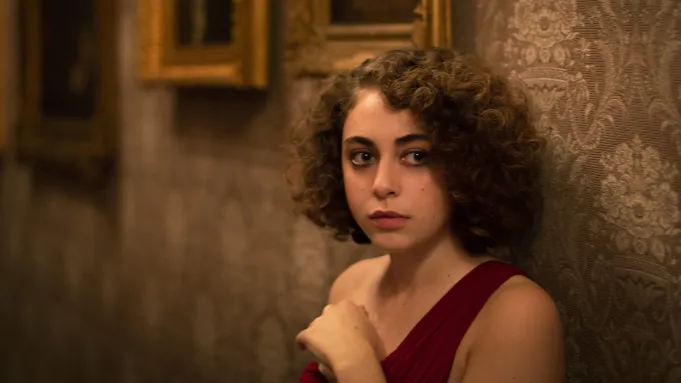In Saverio Costanzo’s “Finally Dawn,” set against the backdrop of Rome in the 1950s at the iconic Cinecitta studio, a love letter to Federico Fellini unfolds. This Venice competition drama masterfully weaves together elements of movies, celebrity, and the magic of cinema. With a cast featuring Lily James, Joe Keery, Rebecca Antonaci, Willem Dafoe, and Alba Rohrwacher, “Finally Dawn” manages to capture the essence of Fellini while forging its path.
The film’s premise may seem derivative at first: a starstruck young woman finds herself as an extra in a Cinecitta film, thrust into the world of Hollywood stars and a nightlong celebration reminiscent of “La Dolce Vita.” However, Costanzo takes a unique approach, striking a delicate balance between celebrating cinema and portraying the self-absorbed nature of actors.
READ MORE: Miley Cyrus Reflects on Falling in Love with Liam Hemsworth While Filming ‘The Last Song’
“Finally Dawn” is uneven in parts, and its 2-hour and 20-minute runtime might feel indulgent, but it is rich in texture, wit, and several impeccably crafted set pieces. The film’s first half is a testament to Costanzo’s attention to detail, reminiscent of his work on the series “My Brilliant Friend.” The story initially places us in a suspenseful black-and-white scene from a war film, resembling neorealist classics like Rossellini’s “Rome, Open City.” This transition to color marks the start of Mimosa’s journey into the world of cinema.
Rebecca Antonaci delivers a nuanced performance as Mimosa, a young woman initially timid and frequently silent, often surrounded by English-speaking Americans she can’t understand. Antonaci’s portrayal allows us to glimpse Mimosa’s inner world even in her silence, a remarkable feat.
The film explores Mimosa’s struggles with a stifling home life and the expectations of an arranged engagement. Mimosa’s rebellion emerges subtly but firmly as she refuses to conform during auditions. Her journey into the world of Cinecitta reveals her hidden strength.
“Finally Dawn” offers behind-the-scenes glimpses of Cinecitta’s grandeur, complete with colossal statues being transported across the studio lot. Amidst this opulence, Mimosa unexpectedly finds herself cast as an extra. As she navigates her newfound world, she crosses paths with the stiff and awkward actress Josephine Esperanto, portrayed impeccably by Lily James.
Josephine’s on-screen performance in a hilariously bad Cleopatra-inspired epic provides a comedic highlight. Joe Keery, as the heartthrob Sean Lockwood, adds to the film’s charm, especially in a scene featuring his bare-chested, sword-wielding heroics.
Costanzo cleverly aligns the audience with Mimosa’s perspective, allowing us to see Josephine’s manipulative tendencies and the complicity of Sean and their friend Rufo more clearly than Mimosa herself.
The film momentarily loses its way during a hedonistic party, paying homage to both real-life Italian scandal figures and Fellini’s “La Dolce Vita.” This sequence tends to overstay its welcome, but it still offers glimpses of the characters‘ depths.
A pivotal moment in which Josephine forces Mimosa to recite a Swedish poem showcases the film‘s capacity to hold suspense in silence. The audience wonders if anyone will come to Mimosa’s rescue, making for a riveting scene.
“Finally Dawn” concludes with a surreal ending that may divide audiences. However, just before that, when Mimosa gazes into a mirror, she sees a transformed individual—one who has shed her meekness in the span of a single night. The accompanying change in music signifies a shift from the ’50s to the ’60s, symbolizing Mimosa’s remarkable journey.
In “Finally Dawn,” Costanzo successfully pays tribute to Fellini while crafting an engaging narrative filled with memorable performances. The film beautifully captures the essence of cinema’s golden era while telling a story of self-discovery and transformation.




















